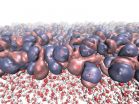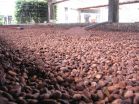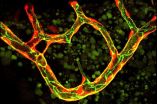In a review of the analyses for Science and Public Policy, Lance A. Waller, a biostatistics professor specializing in spatial epidemiology at Emory University in Atlanta, urges care in next steps, recommending that state and local follow-up go "beyond a dichotomous 'cluster found/not found' outcome and to look carefully at where, when and how methods agree, as well as where, when and how they differ ... to aid the transition between statistical results, epidemiologic insight and policy decisions."
The anomalous rates were detected by five research teams--each using different epidemiological and statistical methodology--on a data set spanning the period 2000-2010 provided by Florida Association of Pediatric Tumor Programs (FAPTP). The FAPTP is a consortium of diagnosis and treatment centers that consolidates data for incorporation into the Florida Cancer Data System, part of the National Program of Cancer Registries of the U.S. Centers for Disease Control and Prevention.
The research groups applied different analytical approaches to achieve the same goal: detect spatio-temporal pediatric cancer clusters. The analyses used familiar methods--scan statistics, classification and hierarchical Bayesian modeling--as well as some ideas new to disease clustering: wombling and machine learning.
During their respective analyses of the FAPTP data, the research groups found several suggestive results. For instance, each approach identified local areas in which the observed pediatric cancer rate is statistically significantly higher than the rate expected given the number of people at risk. While the precise areas of high reported risk differ between methods, the groups identified a few common results that are not identical, but overlap, including the following:
All five teams identified statistically elevated rates of pediatric cancers in an urban area within collections of ZIP code tabulation areas (ZCTAs) in the Miami metro area and in an area just west of the Everglades. (ZCTAs are geographic areas defined by the U.S. Census Bureau to provide a link between census geography--blocks, block groups and tracts--and U.S. Postal Service ZIP code areas.) One analysis reveals the local increase west of the Everglades is based on two cases, both classified as "Other" race, while another analysis indicates this cluster is limited to the year 2000. The observed elevated rates near Miami involve a much larger population size and many more cases, factors that complicate the identification of any shared characteristics common to cases in the cluster. The analyses also reveal other patterns in the data. One analysis that identified a statewide increase in the baseline pediatric cancer incidence rate occurring between 2005 and 2006 merits a closer look to see whether this result represents an overall increase in risk or a change in reporting, because the statistical analysis does not reveal potential reasons for the change.
There also are subtle differences between the specific clusters identified by the various analytical approaches. Comparisons across analyses reveal characteristics of the detected patterns, including the number of cases (two), types of cancer (leukemia or brain/central nervous system cancer) and the racial composition and timing of the cluster west of the Everglades.
"The methods don't completely agree on the precise location, boundaries and make-up of the detected clusters, but in some ways these differences coupled with the detailed questions addressed provide insight into potential epidemiologic and policy conclusions that would be missing in the application of only one method," wrote Waller. "The analyses provide an opportunity to review epidemiologic insights revealed by the analyses and potential policy responses to address public concerns."
The identified clusters are geographically quite large and therefore unlikely to provide clear links between particular environmental exposures to local risks, added Waller in his analysis.
"While the results do not identify a 'smoking gun' in the form of a shared environmental exposure in high-incidence areas, the results do provide epidemiologic insight into the local demographics of the incident of pediatric cancer cases and suggest more detailed assessment of migration patterns in the Miami area," continued Waller in his review. "Policy-wise, the results point to responsibly responsive next steps of detailed description of the cases and the at-risk population in the detected areas to summarize local features in the data, particularly the race of cases west of the Everglades and demographic descriptors of any shifts in the at-risk population in the Miami area during the study period."
Policy responses by local and state health officials may involve more detailed follow-up, including additional data collection, exposure surveys or in-depth investigation of case histories within a reported cluster. Waller added that estimated cancer rates consist of the local number of cases (reported by the FAPTP) and local number of children at risk (reported by the decennial census). Higher-than-expected rates can result from unusually high numbers of reported cases or low numbers of reported local residents. Since Miami, like many urban areas, often experiences rapid changes in population size and composition between decennial censuses, it is important to assess the accuracy of both data components. Waller suggested as a first step assessing the accuracy of the case counts and the inter-census population projections defining the local rates.
"State and local health departments and public health agencies regularly respond to cluster reports from the public. Typically, a responsive and effective response is not based on a detailed new epidemiologic study, but rather is based on education, assessments of local concentrations of demographic risk factors associated with the reported cluster and an assessment of the distribution of numbers of cases expected given the local demographics," said Waller.
INFORMATION:
The ASA is the world's largest community of statisticians and the second-oldest continuously operating professional society in the country. Science and Public Policy was launched in late 2013 by the ASA and offers a fresh, data-analytics take on major public policy issues. It features papers that apply effective statistical methodology to problems in the public policy and political science arenas. Its editorial emphasis is on statistical applications, rather than methodological novelties. Taylor & Francis is its publisher.
About the American Statistical Association
The American Statistical Association is the world's largest community of statisticians and the second-oldest continuously operating professional society in the United States. Its members serve in industry, government and academia in more than 90 countries, advancing research and promoting sound statistical practice to inform public policy and improve human welfare. For additional information about the American Statistical Association, please visit the ASA website at http://www.amstat.org.
For more information:
Jeffrey A. Myers
Office: (703) 684-1221, Ext. 1865; Mobile: (540) 623-7777
Email: jeffrey@amstat.org





